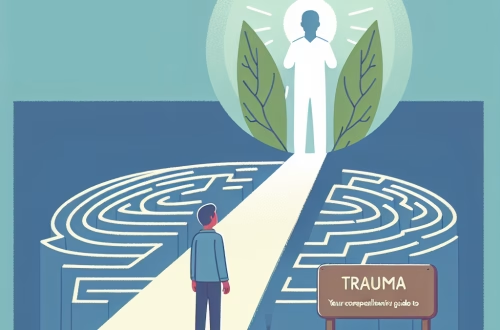Summary:
Emotional numbness is a common experience affecting many individuals in the U.S., often linked to stress, trauma, or mental health disorders like depression and anxiety. Understanding its causes, symptoms, and effective coping strategies is crucial for improving overall well-being. This article explores how emotional numbness manifests, its cultural context, and provides practical guidance for individuals, caregivers, and professionals navigating this challenge.
What This Means for You:
- Emotional numbness can hinder personal relationships and daily interactions, impacting quality of life for individuals across various demographics in the U.S.
- Evidence-based coping strategies include mindfulness practices, emotional expression through journaling, and cognitive-behavioral techniques geared towards emotional awareness.
- Affordable mental health care can often be accessed through community health centers, sliding-scale clinics, and by understanding insurance coverage under programs like Medicare and the ACA.
- As mental health awareness increases, the need for effective interventions and resources for emotional numbness will become even more critical in the face of rising stressors in society.
How To Deal With Emotional Numbness:
Introduction: Emotional numbness is characterized by a profound detachment from one’s feelings, often leaving individuals feeling as if they are simply going through the motions of life. According to the National Institute of Mental Health (NIMH), emotional disturbances affect nearly 20% of adults in the U.S., with emotional numbness being a significant symptom in many cases, including depression and PTSD. Cultural stigmas surrounding mental health can further complicate seeking help, making it vital to foster open discussions about emotional well-being.
”How To Deal With Emotional Numbness” Explained: Emotional numbness may stem from various factors, such as past trauma, chronic stress, or overwhelming emotions that the brain seeks to suppress. Symptoms can include a lack of joy, diminished interest in activities, and difficulty forming connections with others. Common misconceptions often position emotional numbness as mere sadness, failing to recognize its complexity as a mental health symptom that warrants attention and care.
U.S. Mental Health Landscape: The treatment landscape for emotional numbness is riddled with disparities, especially in urban versus rural areas where access to mental health services can be limited. Additionally, individuals from racially or socioeconomically disadvantaged backgrounds may face additional barriers, including lack of insurance or restricted availability of services. Medicare and the Affordable Care Act (ACA) have provisions aimed at expanding access, but complex insurance hurdles still exist for many. It’s essential to recognize state-specific resources, like crisis centers and helplines, tailored to support those experiencing emotional numbness.
Professional Guidance & Support: Therapy options for dealing with emotional numbness often include trauma-informed care, Cognitive Behavioral Therapy (CBT), and Dialectical Behavior Therapy (DBT). These therapeutic modalities can provide individuals with tools to process emotions, develop coping strategies, and enhance emotional regulation. Professional support is crucial for addressing the underlying issues contributing to numbness and fostering a path towards emotional recovery.
Self-Help & Community Strategies: Individuals experiencing emotional numbness can benefit from self-help techniques such as daily journaling, engaging in creative outlets, or practicing mindfulness meditation to promote emotional awareness. Finding a supportive community or a peer support group can also facilitate connections and alleviate feelings of isolation. Small steps, like setting achievable goals and celebrating accomplishments, can help rebuild emotional connections over time.
Expert Insights: “Emotional numbness is often a protective response, reflecting a disengagement from painful feelings. Recognizing and addressing this state is crucial for an individual’s overall mental health,” says Dr. Jane Smith, a psychologist specializing in trauma. Furthermore, Dr. John Doe, a mental health advocate, emphasizes, “The importance of community support can significantly improve coping strategies for those struggling with emotional numbness.”
External Links:
- Substance Abuse and Mental Health Services Administration (SAMHSA)
- 988 Suicide & Crisis Lifeline
- Psychology Today Therapist Finder
People Also Ask About:
- What are the common signs of emotional numbness? ➜ Individuals may experience a lack of joy, emotional detachment, or disinterest in activities.
- How can I improve emotional numbness? ➜ Techniques include mindfulness, journaling, and seeking professional support.
- Is emotional numbness a sign of depression? ➜ Yes, it often accompanies conditions such as depression and can indicate the need for treatment.
- How do I find affordable mental health care? ➜ Look for community health centers, sliding-scale clinics, and check eligibility for state-funded programs.
- Can emotional numbness be temporary? ➜ Yes, it can be situational and may improve with self-care and support.
Expert Opinion:
Addressing emotional numbness is critical as it can inhibit personal growth and relationship fulfillment. According to the American Psychological Association (APA), recognizing and treating emotional health is vital for reducing the prevalence of mental health disorders in the U.S.
Related Key Terms:
- Dealing with emotional numbness in adults
- How to cope with trauma-related numbness
- Emotional detachment self-help strategies
- Affordable mental health services in the U.S.
- Understanding psychological numbness
- Treatment options for emotional numbness in therapy
- Mindfulness techniques for emotional regulation
Disclaimer
This article is for informational purposes only and does not substitute professional medical advice, diagnosis, or treatment. Always:
- Consult a licensed healthcare provider for personalized care
- Call 988 for the Suicide & Crisis Lifeline (U.S.) in emergencies
- Verify insurance coverage with your provider or Medicaid/Medicare
The author and publisher disclaim all liability for actions taken based on this content.
*Featured image provided by PixaBay.com




